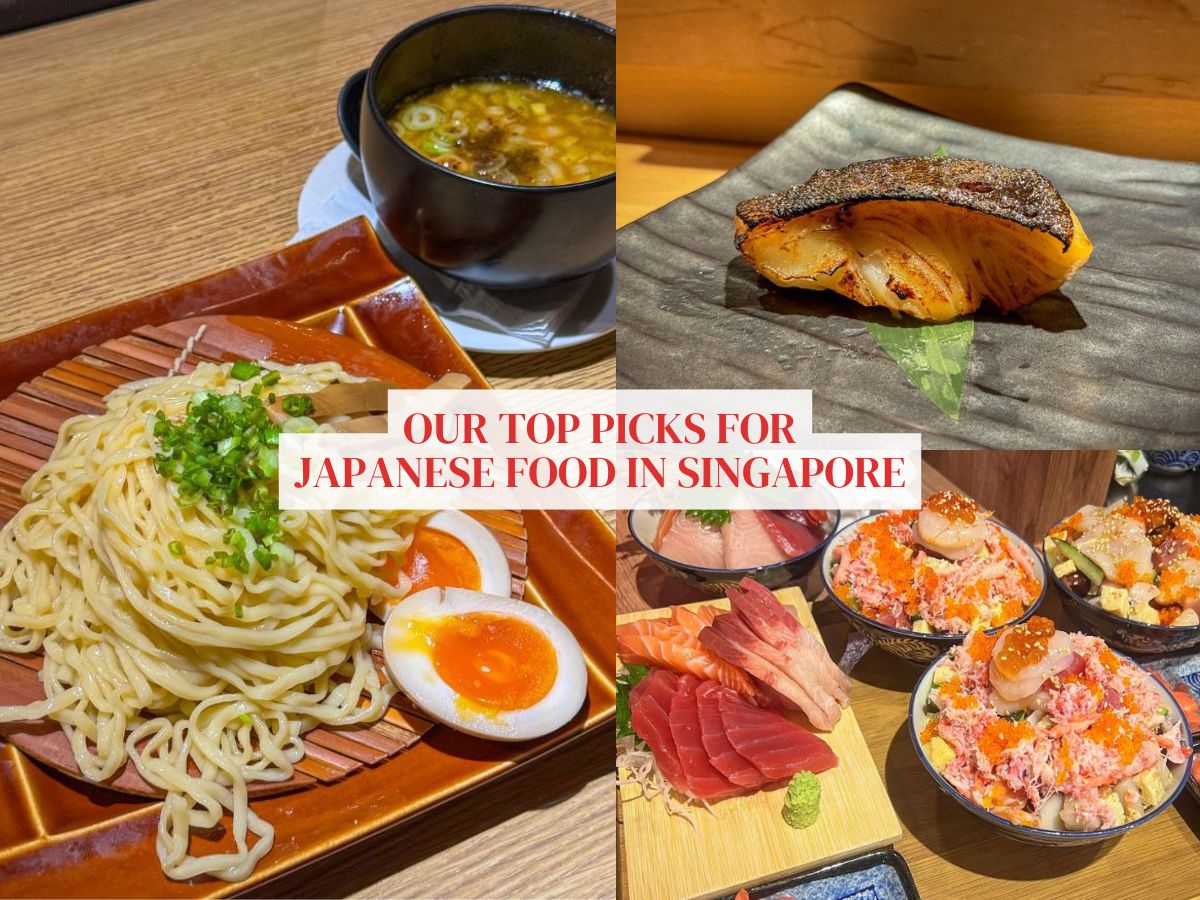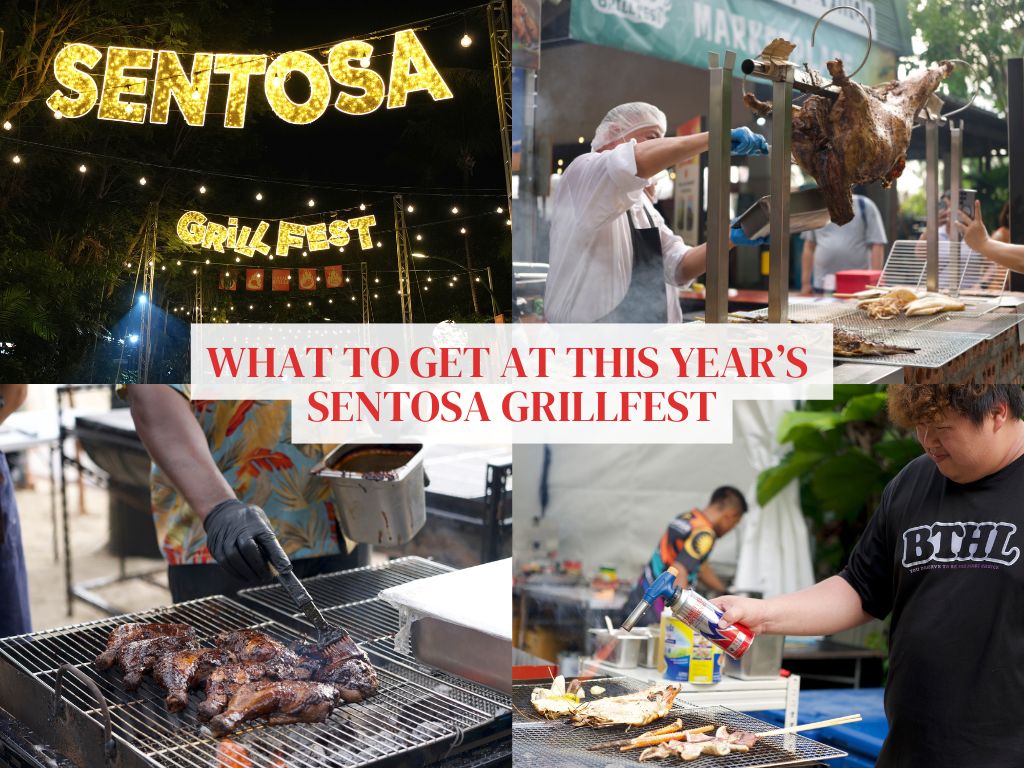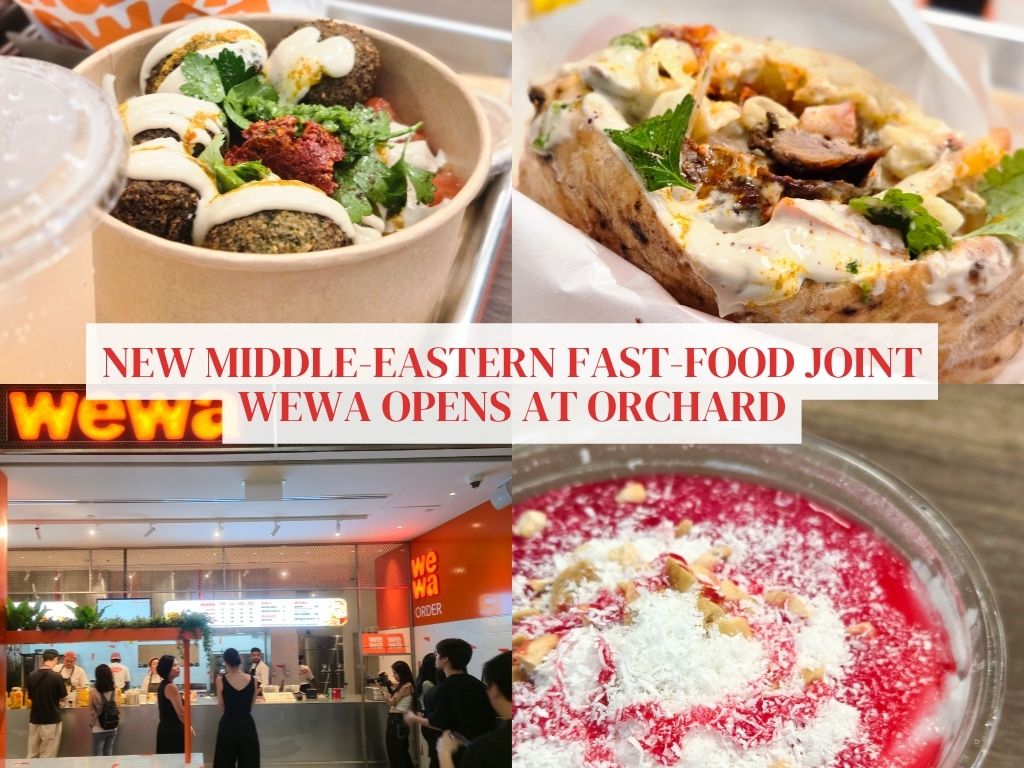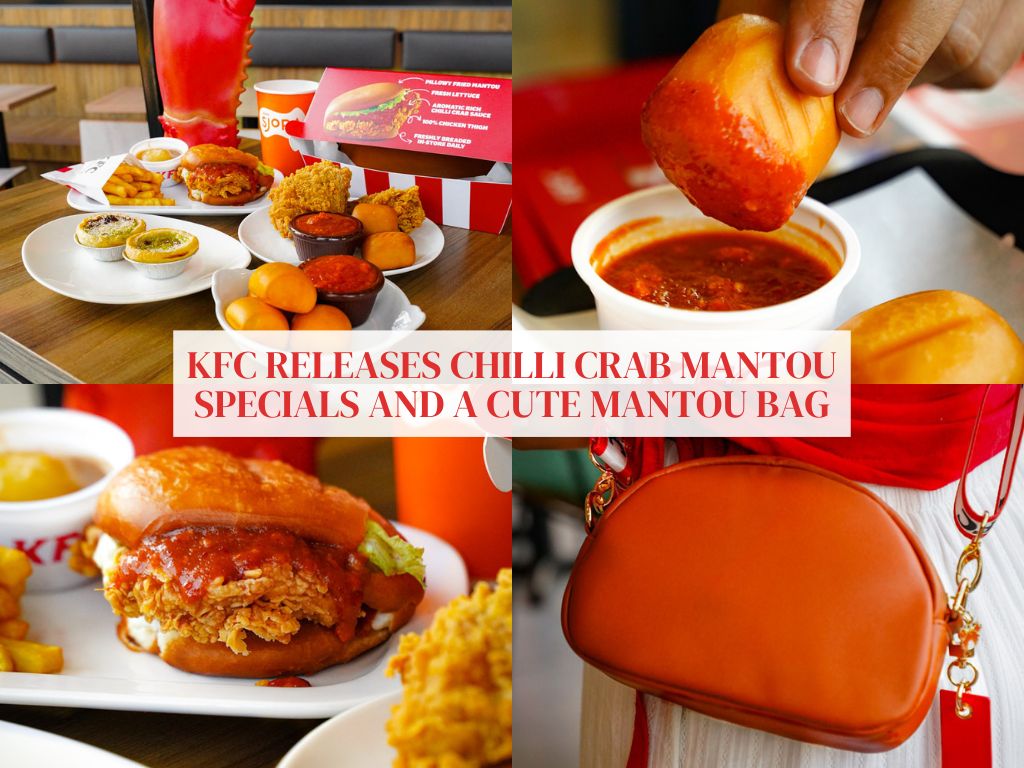15 of our top picks for Japanese food in Singapore
When you combine Singaporeans’ love for all things Japanese with their deep-rooted love for food, what we get is a burgeoning array of Japanese food in Singapore. Over the years, we’ve seen a growing number of specialty restaurants pop-up. From izakayas to omakase restaurants, there’s been great strides made to bring an increasingly authentic Japanese dining experience to our sunny island.
It can be challenging to discern which are worth the steeper price points when there are so many options for Japanese food in Singapore, so to make the decision-making easier, we’ve collated some of our favourite places to get your favourite Japanese dishes in Singapore.
Whether you’re looking for an affordable but classy omakase experience or a comforting bowl of ramen, we’ll have something on our list of our top picks of Japanese food spots in Singapore:
1. Sanpoutei
Shaw House, B1-04/05, 350 Orchard Road
Open: Sunday to Thursday (11.30am to 9.30pm), Friday and Saturday (11.30am to 10pm)
235 Holland Avenue
Open: Sunday to Thursday (11.30am to 9.30pm), Friday and Saturday (11.30am to 10pm)
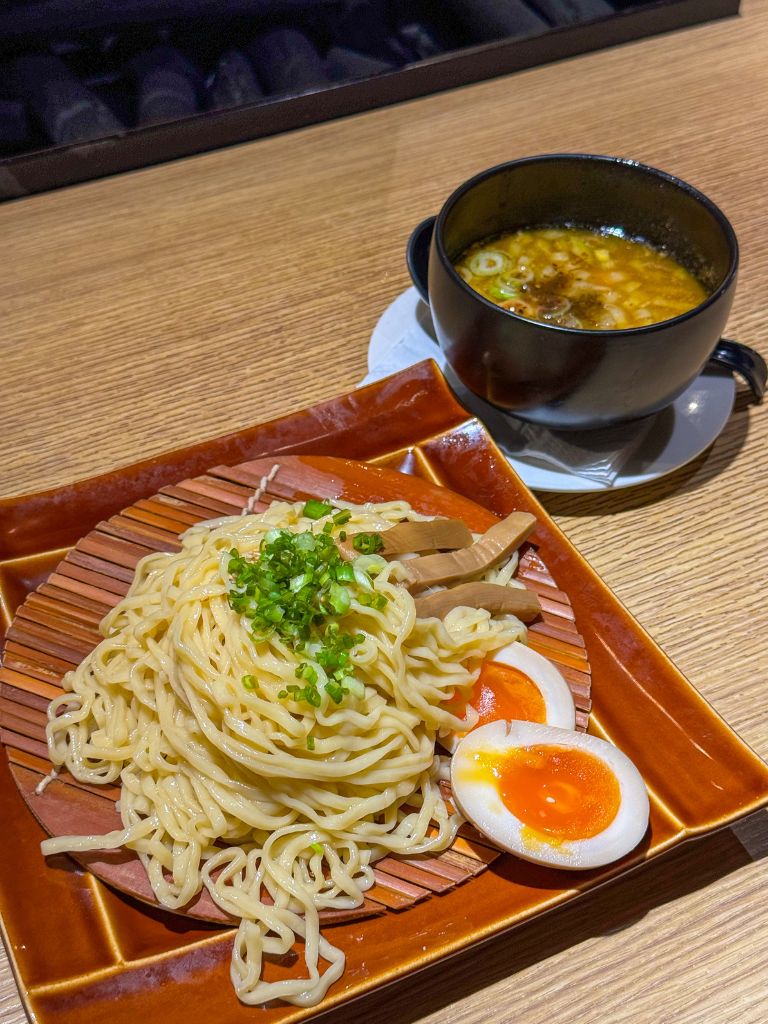
Why visit? For us, Sanpoutei stands out as one of the few places you can find tsukemen (dipping sauce noodles) in Singapore. This unique dish has a thicker soup broth that is served separate from its noodles resulting in more savoury noodles.
The restaurant, originating from Niigata, also serves maze soba and shoyu (soya sauce) ramen, one of the most traditional forms of ramen in Japan. Interestingly, the core flavours at Sanpoutei are centred around dried sardine instead of the usual chicken or pork. For example, the maze soba aburi chashu (S$14) is tossed in a special sauce made of dried sardine oil, shoyu and other condiments.
Crowd favourites: Similarly, its rich dried sardine tsukemen (S$16) is served with a side of soup stock made from dried sardine and fried bonito — the result is a savoury and umami flavour base. Even though we felt that the stock could cling to the noodles a little better, we still thoroughly enjoyed the springy and chewy texture of the noodles made in-house.
If you prefer something more soupy, Sanpoutei’s signature item is its Niigata shoyu ramen (from S$14). It comes with aburi chashu, nori, bamboo shoots and spinach. The broth is made from seven hours of stewing dried sardine with shoyu from Niigata and has a salty and savoury base — the use of seafood in the broth makes this ramen a much lighter option compared to other restaurants.
2. Tonkichi
Shaw House, Level 4, 350 Orchard Road
Open: Monday to Thursday (11am to 3pm, 5pm to 9.30pm), Friday and Saturday (11am to 10pm), Sunday (11am to 9.30pm)
Takashimaya Shopping Centre, 04-24/24A, 391 Orchard Road
Open: Monday to Thursday (11am to 3pm, 5pm to 9.30pm), Friday and Saturday (11am to 10pm), Sunday (11am to 9.30pm)
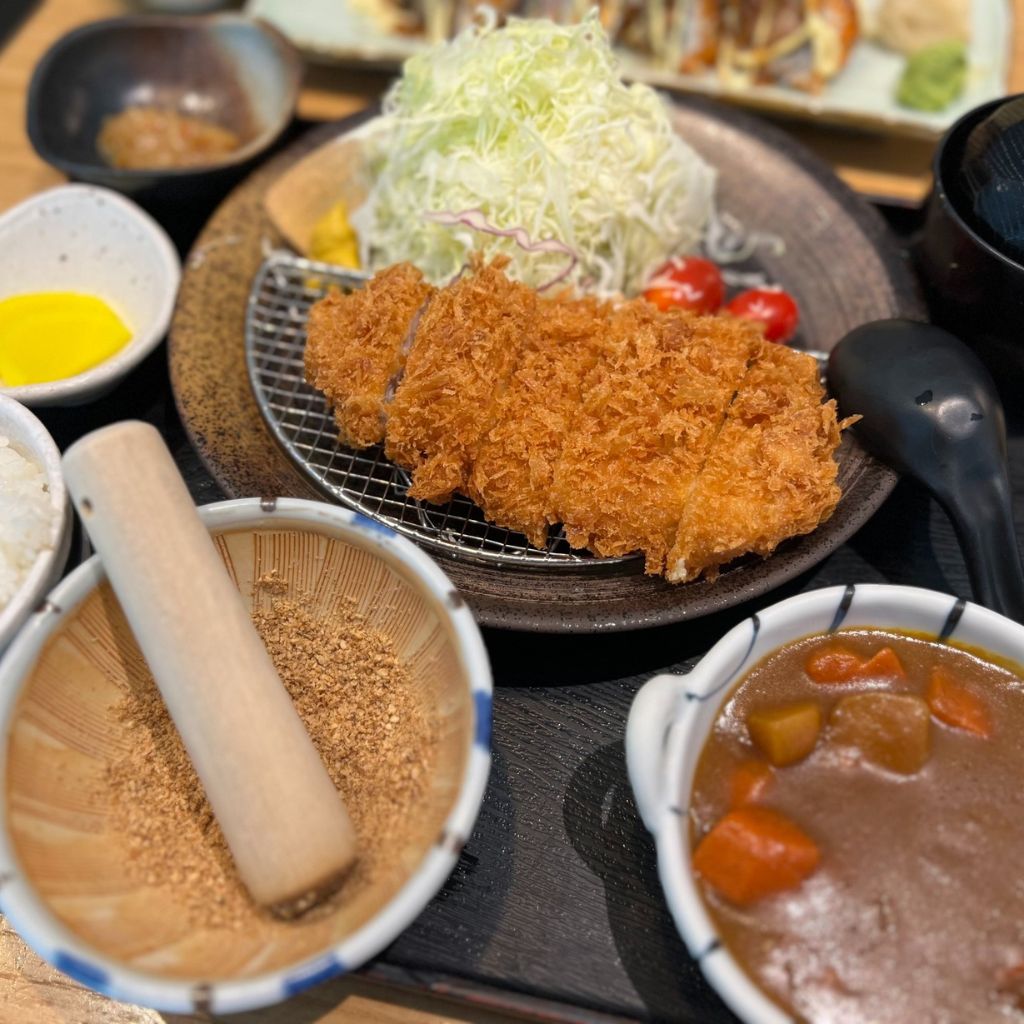
Why visit? With a history dating back to the 1990s, Tonkichi is one of the best spots for authentic tonkatsu in central Singapore. The meats here are carefully selected and trimmed, ensuring there’s the perfect balance of flavour and heaviness.
The tonkatsu sets here are served with sesame seeds which you can grind on your own, adding a fun little element to your meal. The restaurant recommends you add its homemade tonkatsu sauce, and dip the katsu in to enjoy.
Crowd favourites: There are three main katsu sets sold here — rosu katsu set (pork loin, S$26), hire katsu set (pork fillet, S$26) and chicken katsu set (S$23) — each set comes with a generous mountain of cabbage served with sesame sauce, miso soup, pickles and a bowl of rice.
The pork loin tends to be on the richer side as this cut has a strip of fat along the side of the tonkatsu. For those who prefer the leaner cut, definitely go for the hire katsu instead; Tonkichi does a good job of bringing the flavours from this cut, too.
3. Tomi Sushi
Multiple stores islandwide.
Open: Operating hours vary across stores
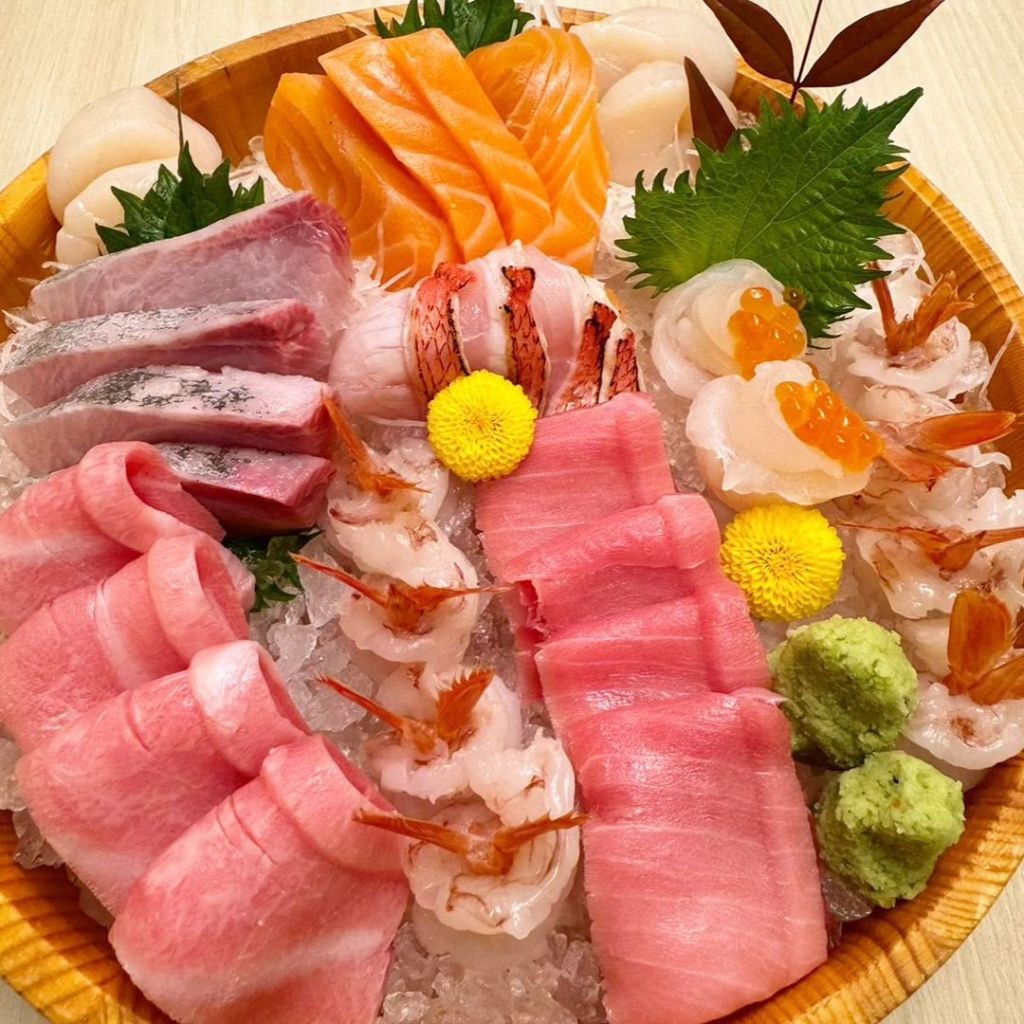
Why visit? Established in 1954, Tomi Sushi is a successful sushi chain that originated from Niigata. It serves some of the best authentic Japanese dishes you can find in Singapore and has an extensive menu to choose from.
Tomi Sushi pays extensive attention to detail to the dishes served here. Aside from the seafood being flown in fresh from Japan, the restaurant also carefully selects every ingredient used here, down to the brand of rice and salt.
It has multiple outlets and ample seating options, making it perfect for a casual meal alone at the sushi bar, or for a gathering with friends at booths or tables.
Crowd favourites: For a more wallet-friendly experience, head down for the lunch sets at the restaurant. The highly recommended osusume lunch set (S$48) includes chawanmushi, a variety of sides, and an assortment of nigirizushi and maki, including maguro chutoro and otoro.
Tomi Sushi also has some interesting items on its a la carte menu. For example, the tochioage (S$18 for plain, S$20 with nato), a unique deep-fried tofu dish from the Niigata prefecture, frequently enjoyed by the Japanese.
4. Sushi Zanmai
Raffles Holland V Mall, 03-04, 118 Holland Avenue
Open: Monday to Sunday (11.30am to 10pm)
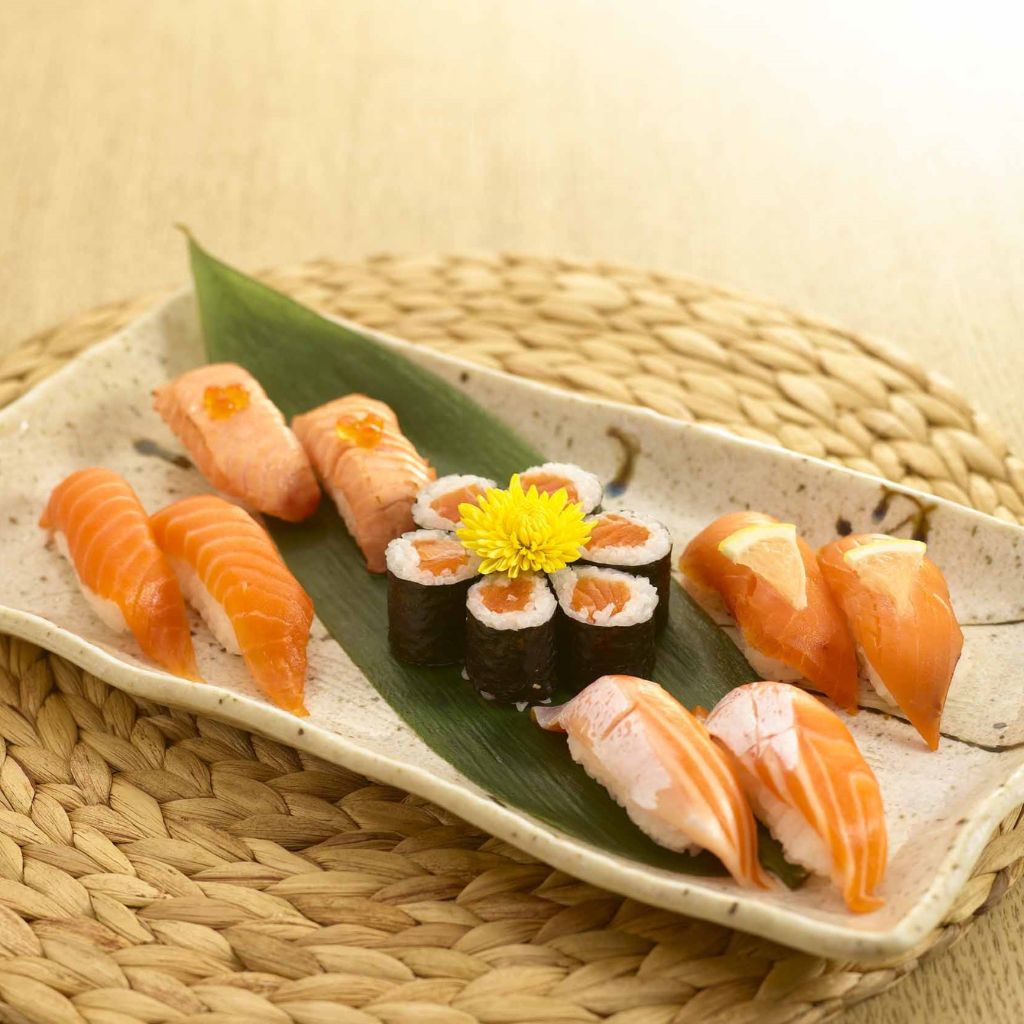
Why visit? If you grew up having Japanese food from some of the major sushi chains in Singapore, then stepping into Sushi Zanmai will feel like a blast from your childhood. In case its name doesn’t ring a bell, it’s a successful chain that was established in 2007 and is now located at Holland Village in Singapore.
Sushi Zanmai is one of the few places you can find truly cheap Japanese food in Singapore — it has pieces of sushi that go for as low as 80 cents! The menu itself is also very extensive, with hundreds of options to choose from. You’ll probably have difficulty narrowing down what to eat thanks to the variety, but the staff here are very welcoming and will be more than happy to provide you recommendations on best sellers.
Crowd favourites: Sushi Zanmai is best known for its sushi and thick slices of sashimi — you’ll find interesting items such as the natto maki (S$2.80) and hotate tobikko maki (S$6.80), and well-loved favourites like salmon mentai (S$1.80) or nama hotate (S$2.20).
If you’re looking for something more satisfying, try the affordable salmon zanmai (S$10.80) set, which features eight pieces of different salmon nigiri, and a salmon maki. For a side, you might want to consider ordering the fried salmon skin (S$4.80) — but be warned, it’s highly addictive.
5. Kuro Maguro
Guoco Tower, 01-04, 7 Wallich Street
Open: Monday to Friday (11.30am to 2pm, 5.30pm to 10pm), Saturday and Sunday (11.30am to 2pm, 5.30pm to 9pm)
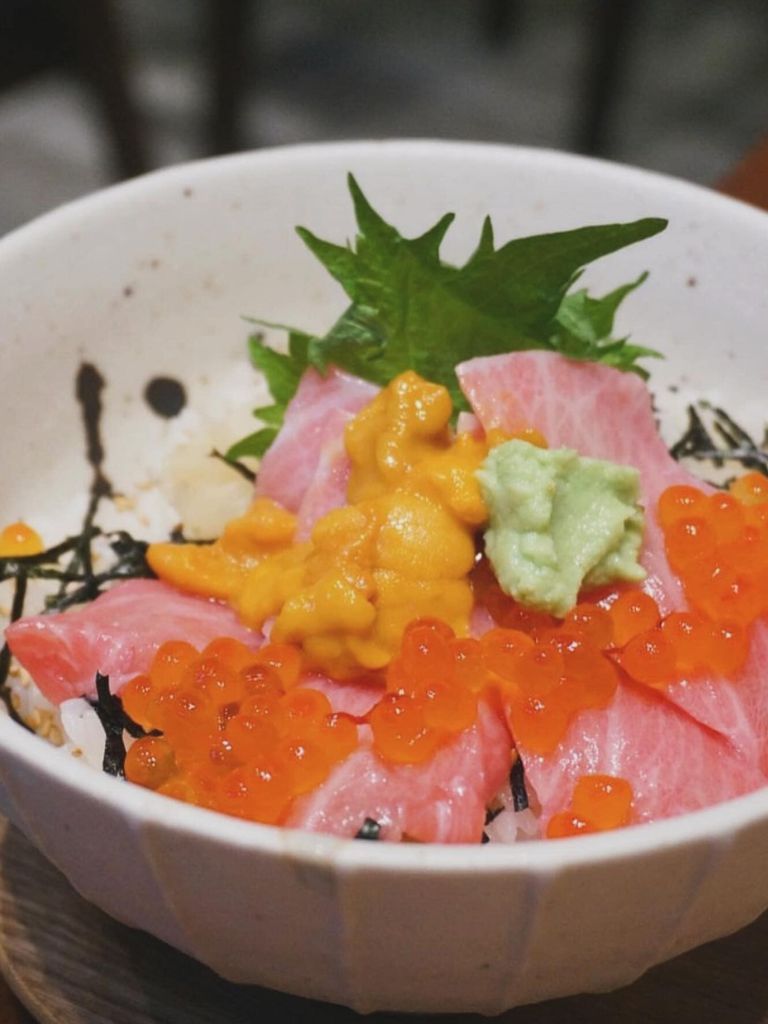
Why visit? Kuro Maguro is a concept by Misaki Megumi Suisan, a maguro and sashimi wholesale seller from Japan. As the name suggests, this is a spot for fans of bluefin tuna, a fish we find to be not as forgiving as salmon — if the tuna isn’t fresh, you can tell from the texture and lingering unpleasant odour.
To keep the fish as fresh as possible, Kuro Maguro uses a special technique to freeze the fish and transport it over directly from its trawlers, which also helps it keep prices affordable.
If you’re pressed for time, Kuro Maguro is also one of the greatest spots to get Japanese food delivery in Singapore. It’s centrally located at Tanjong Pagar and located near the CBD, allowing you to save on delivery fees if you’re in the office.
Crowd favourites: The negitoro meshi (S$17.80) is one of the most popular dishes here as it’s only available for lunch. It features minced tuna belly served with green onion and pickles on a bed of rice. Negitoro is typically much richer in flavour as it’s scraped from the fatty parts of tuna.
Kuro Maguro also has a few tuna-based sushi rolls on its menu which is quite a unique addition since most places don’t use tuna. You could choose from the premium o-toro roll (S$29.80), the aburi toro roll with truffle sauce (S$34.80) or the maguro mentai roll (S$19.80). We recommend opting for the latter to share and springing for a more premium cut of tuna in your main dish.
6. Public Izakaya
100 AM, 01-09, 100 Tras Street
Open: Monday to Thursday (11.30am to 2.30pm, 5.30pm to 12am), Friday (11.30am to 2.30pm, 5.30pm to 1am), Saturday (5pm to 12am), Sunday (5pm to 10pm)
Icon Village, 01-14/15/16, 16 Enggor Street
Open: Monday to Thursday (11.30am to 2.30pm, 5.30pm to 12am), Friday (11.30am to 2.30pm, 5.30pm to 1am), Saturday (5pm to 12am)

Why visit? One of the largest izakayas in Singapore, Public Izakaya, located in Tanjong Pagar is almost always fully packed with big crowds — yes, both of its outlets!
Lauded as one of the best spots for an authentic Japanese izakaya experience, Public Izakaya has an extensive menu here with a good mix of classic Japanese and innovative fusion dishes, so you’ll definitely find something you like here.
Crowd favourites: Oden is one of the more difficult Japanese type meals to find in Singapore, but Public Izakaya has an omakase oden set (S$22 for six pieces and S$36 for 10 pieces) available for a lighter, more comforting option.
There are some very interesting options here as well, including the jaga mentaiko (S$14), a crunchy shredded potato dish baked with mentaiko sauce that’s sure to be a crowd pleaser. For something more filling, you could try the tori chazuke (S$24). This is a simple cooked rice dish topped with chicken stock broth and grilled chicken, creating something simple and comforting.
7. Bari Uma
Novena Gardens, 01-03/04, 273 Thomson Road
Open: Monday to Sunday (11am to 9.30pm)
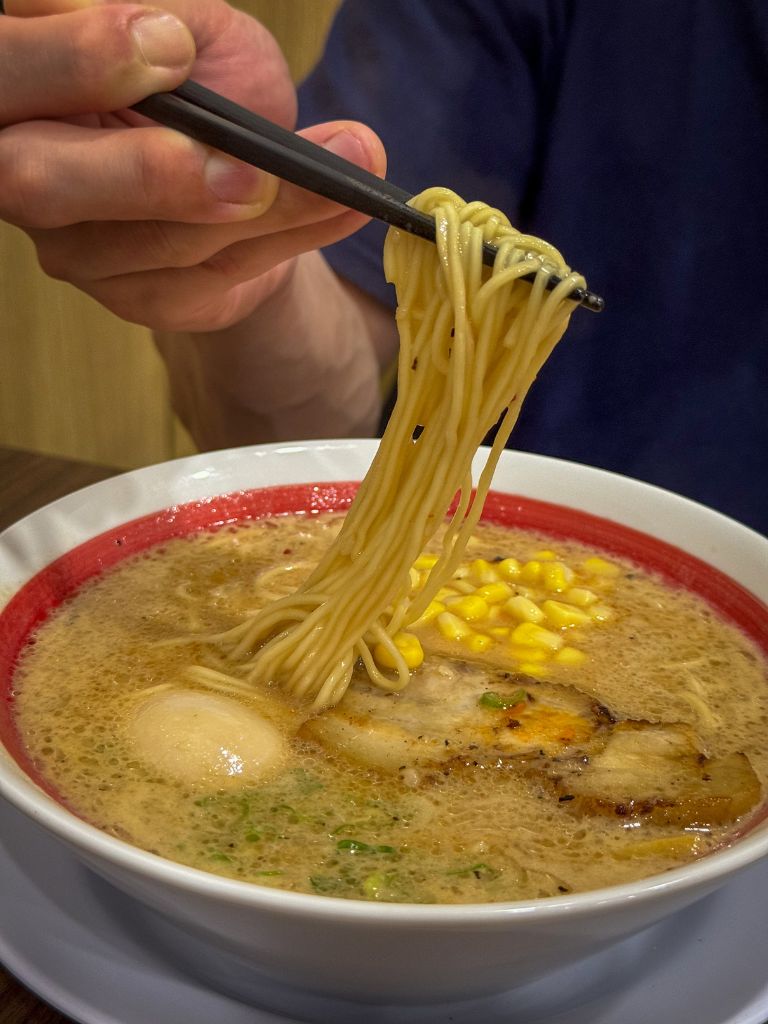
Why visit? With a name that stands for “super tasty”, you can be sure that Bari Uma serves some of the best Japanese food in Singapore. The restaurant was established in 2003 in Hiroshima, specialising in ramen, and has since expanded across different parts of Asia.
Over the years, the brand has refined and perfected the flavour of its soup base. The recipe is so precious that the soup base is made and sent directly from Japan, preserving the authentic flavour. The noodles in Bari Uma are also made fresh for each serving, giving the noodles a perfectly chewy texture.
Crowd favourites: For a simple, unpretentious bowl of ramen, opt for the bari-uma (S$13.90) which features noodles in a pork flavoured shoyu soup and a perfectly grilled thick cut chashu. The most popular ajitama-uma (S$15.90) is essentially the same thing with the addition of ajitama (flavoured egg, S$2 as an add-on).
Arguably the most important part of ramen, the broth is incredibly rich with strong umami flavours. We found the soup to be thicker than the usual shoyu ramen, but yet it wasn’t overpowering. The chashu is also a perfect companion to the bowl of noodles and soup — it’s thick with smoky undertones, giving every mouthful some extra depth.
8. Sushi Airways
20 Baghdad Street
Open: Tuesday to Sunday (12pm to 3pm, 5.30pm to 10pm)
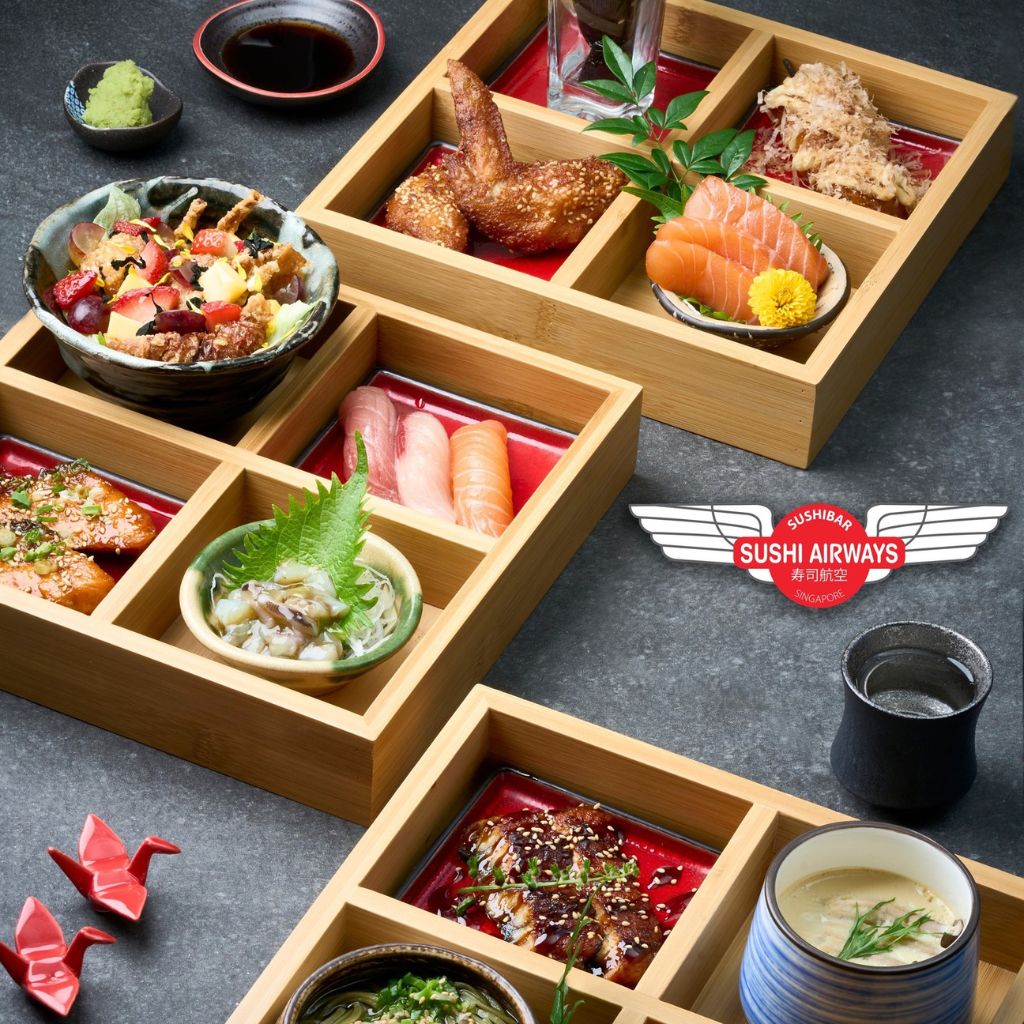
Why visit? Located in the bohemian-esque area of Haji Lane, Sushi Airways is an unorthodox Japanese restaurant with a heavy commitment towards its aircraft theme. From the decor to the flight-themed menus, Sushi Airway provides a unique and interesting dining experience for its patrons.
Japanese food enthusiasts will be happy to hear that the theme is not just a gimmick to get you to visit — the food here is fresh as sashimi is flown in for the restaurant four times a week from Japan. You’ll get to try these ingredients in its omakase form, or from an a la carte or lunch set menu.
Crowd favourites: One of the most interesting concepts here would be Sushi Airways’ flying set lunch (S$26), which is available from Monday through Saturday — you can choose any four items from over 30 dishes ranging from sushi to hand rolls and more.
The dishes are generally very well done, but the portions might be a tad small for bigger eaters. We would recommend carefully selecting your four items, and including carbs as one, if not two, of your choices
Some of our favourite items here include the soft shell crab hand roll (S$12) which was crispy and just the right amount of savoury. For hot dishes, the beef yakiniku (S$28) was plenty satisfying with balanced flavours of sweet and salty.
9. Tokyo Soba
Icon Village, 01-12/13/14, 12 Gopeng Street
Open: Monday to Sunday (11.30am to 10.30pm)
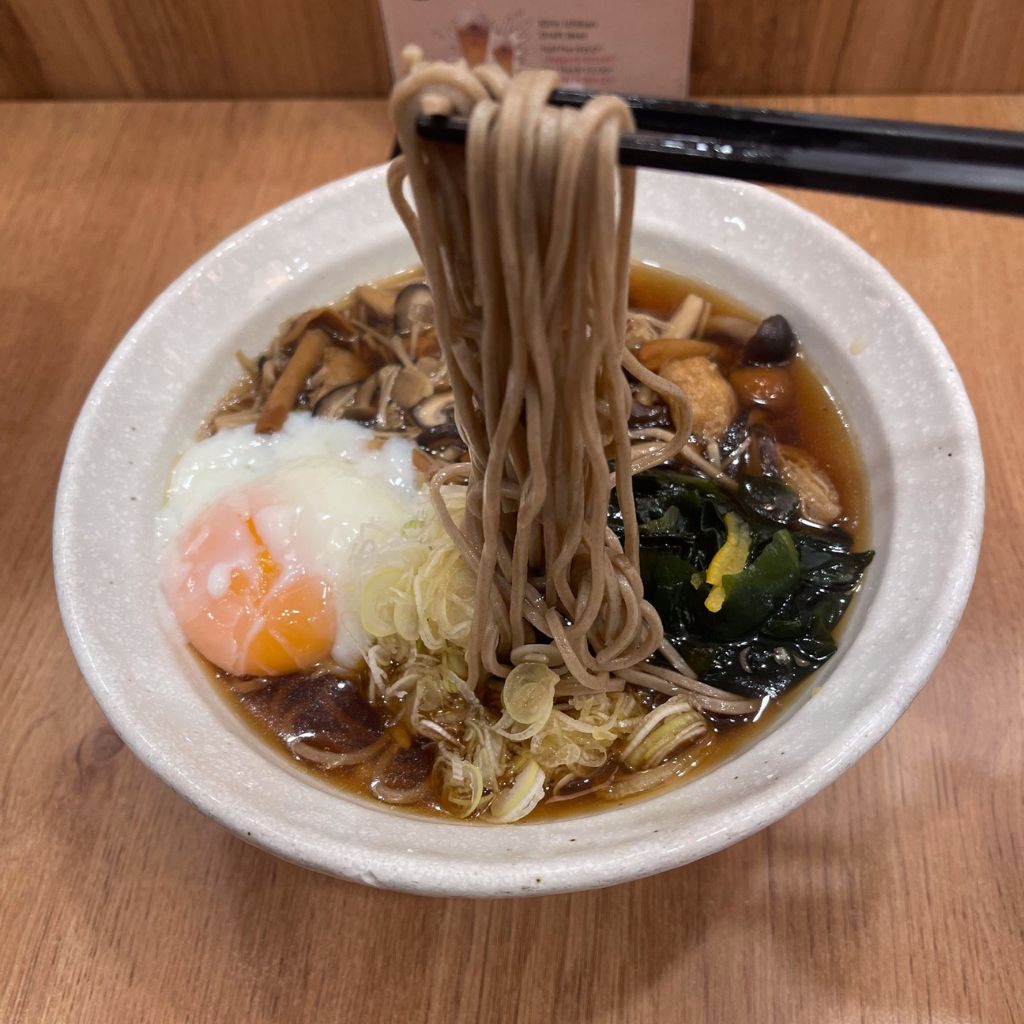
Why visit? One of the best places to find cheap Japanese food in Singapore, Tokyo Soba is a fuss-free restaurant that first established itself in 2018. The soba here is made fresh daily, ensuring that the nutty flavour and chewy texture of its noodles shines through in the dish.
The restaurant has plenty of seats available so it’s easy to pop by after work for a quick meal that’s healthy and light on the palette. There are both warm and cold dipping options, though the warm broth will give you more choices toppings wise.
Crowd favourites: The kamo nanban soba (S$17) features smoked duck breast as the topping. It’s one of our personal favourites as it’s not a common protein choice available at Japanese soba restaurants in Singapore, and it adds a delightful richness to the dish.
If you’re not feeling too hungry, we recommend the 5 mushrooms soba (S$16). As the name suggests, the dish features five different kinds of mushrooms which lends the dish a unique flavour profile that’s umami and earthy, but also slightly sweet.
10. Maji Curry
Square 2, 02-07, 10 Sinaran Drive
Open: Monday to Sunday (11am to 9.30pm)
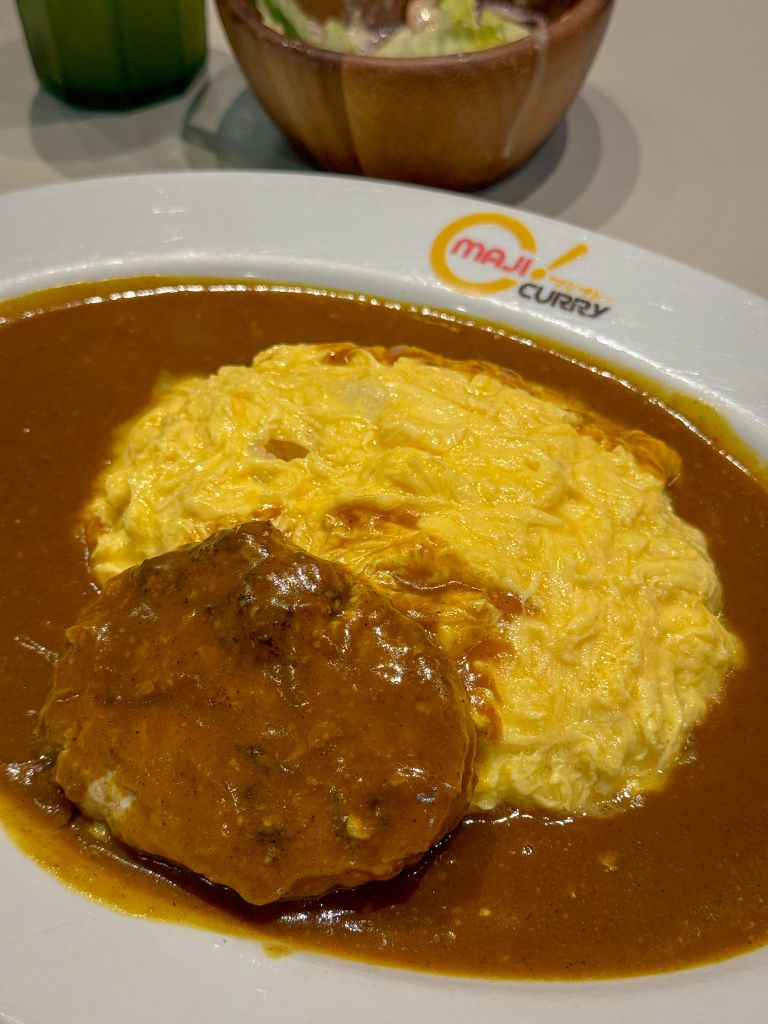
Why visit? There are few places in Singapore specialising in Japanese curry, which made Maji Curry an exciting find for us. This unsuspecting store originates from Japan and is hidden away at the corner of Square 2. In fact it’s so low-key that you’d scarcely believe that it won the title of best curry in Japan twice now — once in 2018 and again in 2022.
In true Japanese fashion, the stall is rather small and cramped. However, you’ll find seats outdoors, too. Options here include the standard cutlet or steak curry rice, but also some vegetarian options, so there’s plenty of choices here.
Crowd favourites: As someone with a soft spot for the shiny, fluffy omelette Japan is known for, the tonkatsu omelette curry (S$14.50) was an obvious choice for us. The curry paired well with the decadent eggs and this simple combination was fulfilling enough. If you’re feeling peckish, you can also add S$4 for a set meal which comes with salad and a drink.
Don’t fret if you can’t handle spice well — Maji Curry allows you to tailor your curry to different levels. The cheese curry series (from S$14.30) is also a good choice for those averse to spice. The creaminess of the cheese mellows any untoward spiciness.
11. Waku Waku Yakiniku
27 Bali Lane
Open: Monday to Sunday (12pm to 3pm, 5pm to 10pm)
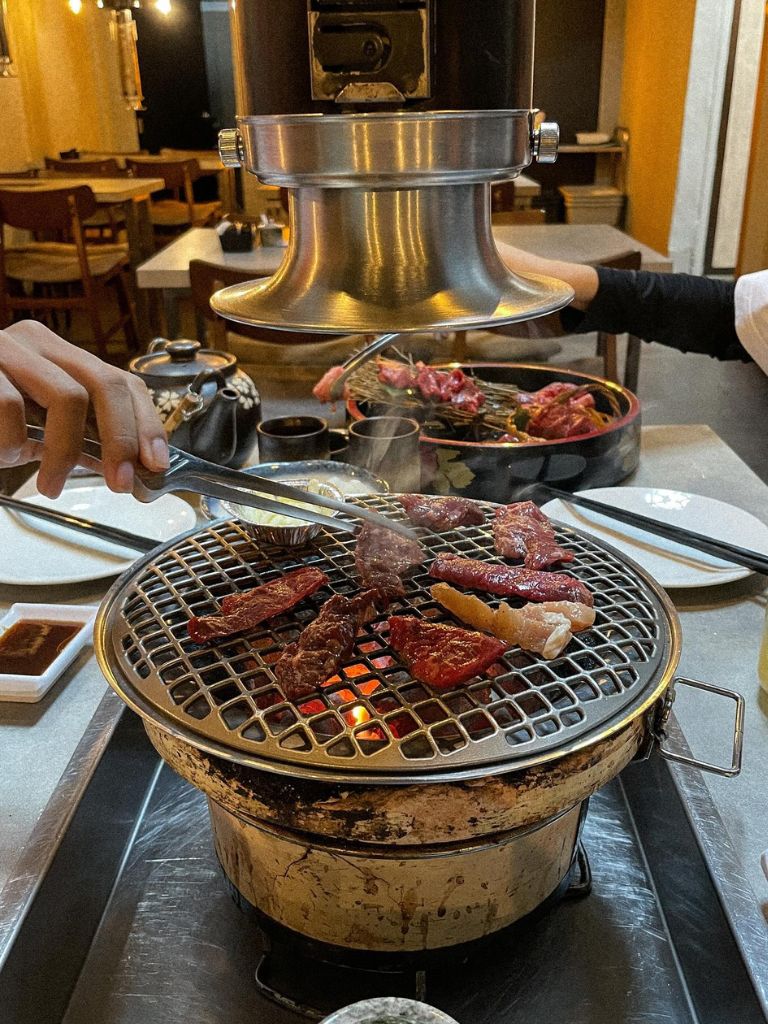
Why visit? Singapore’s first halal yakiniku restaurant, Waku Waku Yakiniku specialises in its premium A5 wagyu selections. Located in Bali Lane, you won’t miss the entrance with its gigantic golden fortune cat perched atop its entrance.
The restaurant can host large groups, as long as you call in advance, making it a great spot to host family gatherings or company dinners. You’ll be pleasantly surprised to find that the restaurant even uses real charcoal for the grilling, imbuing the meats with more complex, intense flavours. We daresay it’s one of the best halal Japanese foods in Singapore.
Crowd favourites: If it’s your first time there, you should gun for the beef platter (S$68 for 500g of meat) which features different cuts of beef available at the restaurant. You can then add on different cuts to suit the dining capacity of your group, such as the sagari (S$15), one of our favourite cuts for its tenderness.
You can have the meat on its own, or opt to enjoy it with the homemade yakiniku sauce — you’ll have to experiment on your own what tastes best here.
To distract from the heaviness of the meats, you could also order some light sides to share. Waku Waku Yakiniku has a takoyaki mentaiko (S$9.20) on its menu, which is a unique take on the otherwise commonplace takoyaki.
12. Tempura Udon by Mizuya
Orchid Hotel Singapore, 01-14, 1 Tras Link
Open: Monday to Saturday (11.30am to 2pm, 6pm to 10pm)
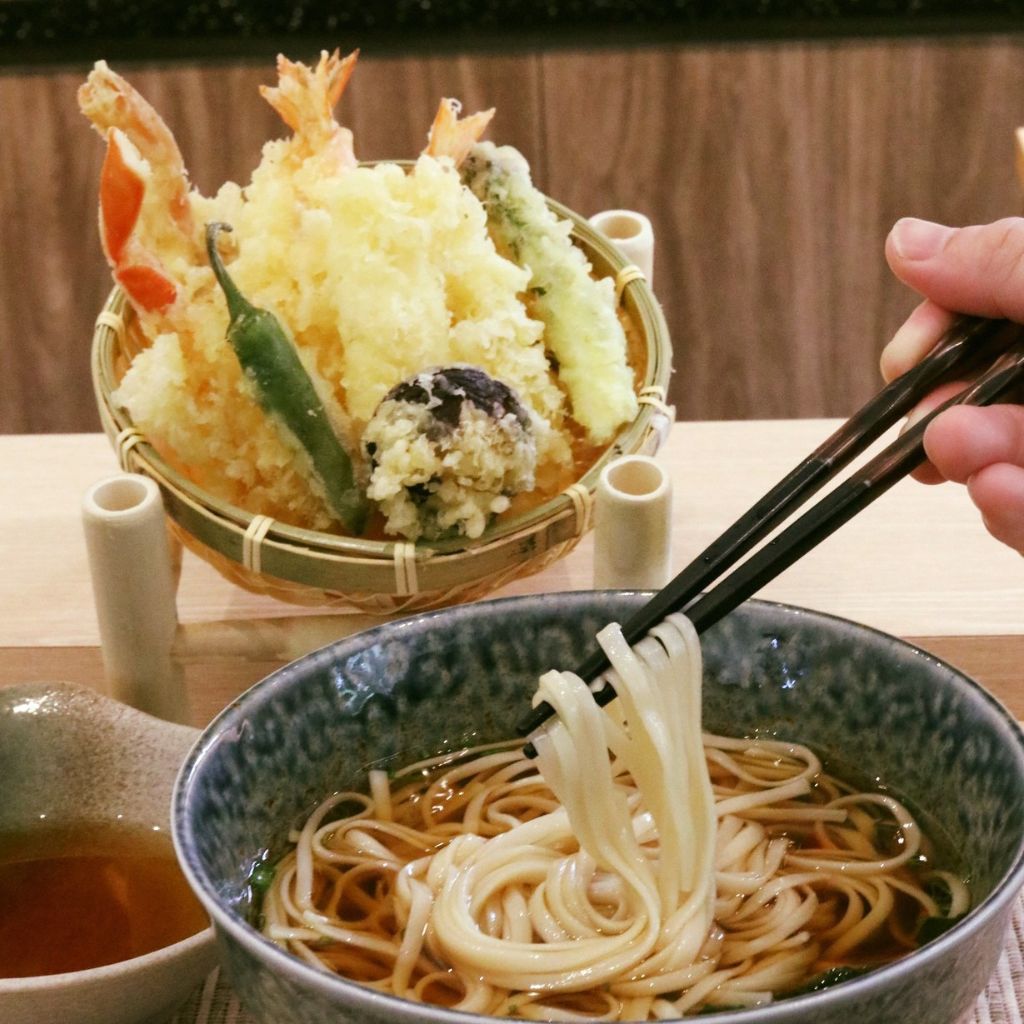
Why visit? A lowkey spot located at the heart of Tanjong Pagar, Tempura Udon by Mizuya is slowly gaining prominence amongst the locals for its accessibility and value. Unlike other tempura spots, this restaurant has a variety of non-shellfish options including salmon and chicken tempura.
We find the portions here to be very substantial, too. Aside from a generous serving of carbs, either udon, soba or mushroom rice, there are usually three pieces of protein and four pieces of vegetables with every set.
Crowd favourites: We highly recommend the udon noodles served here as it’s quite different from other udon spots — the thin and slightly flat udon noodles are firm, but delightfully chewy. We recommend getting it with the shake tempura (S$16), our go-to choice at this affordable Japanese restaurant. It features three large pieces of salmon and four pieces of vegetable tempura.
Despite it being an udon specialty shop, the aburi bara shake chirashi don (S$26) is another popular option here, with its mushroom truffle flavoured rice and thick slices of salmon with flame seared cod fish roe. The rice bowl is served with additional toppings, adding interesting flavours and textures when mixed into the rice.
13. Katachi Sushi Bar
Orchard Plaza, 01-49, 150 Orchard Road
Open: Tuesday to Sunday (5pm to 12am)
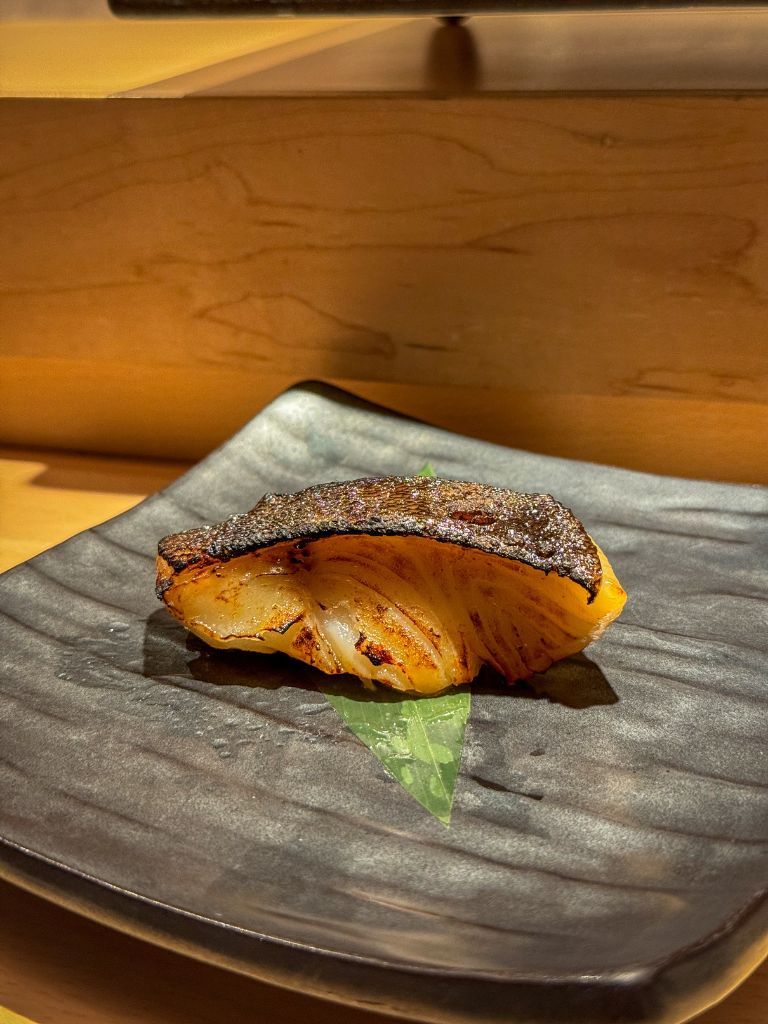
Why visit? Katachi Sushi Bar is an intimate hole-in-the-wall spot located at the edge of Orchard. It’s a relatively affordable omakase spot that’s quiet and cosy — perfect for date nights.
While some omakase spots typically require you to start your meals at very specific times, Katachi Sushi Bar does not. We arrived a little earlier than expected, but were immediately seated and served with others from an earlier time slot. This made the experience a little less intimidating.
Crowd favourites: There are six different omakase tiers to choose from, with options starting from S$68. However, everyone in the group has to order the same omakase option.
We recommend going for the mid-tier, takumi — gindara (S$108) option as it features one of our favourite courses from here — the gindara saikyo yaki (miso black cod). This course is one of the longest and features an appetiser, seasonal sashimi, tamago, gindara saikyo yaki (miso black cod), 12 pieces of sushi, a maki dish and fish bone soup.
From the S$98 option onwards, the courses are quite extensive and filling, making it a value-for-money experience. If you visit the sushi bar after 9pm, you can even have the shime sushi set which consists of eight pieces of quality sushi for a very affordable S$38.
14. Tora San
The Centrepoint, 03-44, 176 Orchard Road
Open: Monday to Sunday (11am to 3pm, 4.30pm to 10pm)
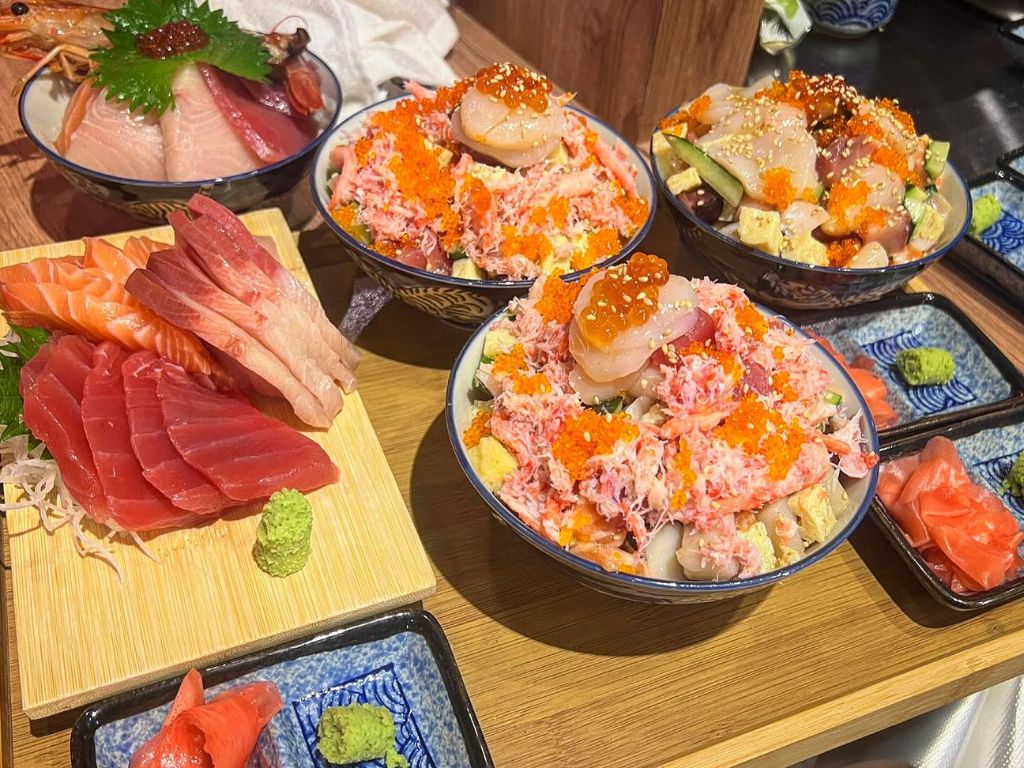
Why visit? Tora San is a lowkey Japanese restaurant located on the third floor of The Centrepoint. It’s a relatively quiet spot, perfect for catch-ups and to relax after a long day at work.
Instead of sticking to the minimalistic and clean wood aesthetic of many Japanese restaurants, Tora San embraces a lively interior with colourful murals and a ton of paper lanterns. You’ll even find a tora (tiger) mascot at the entrance for adorable photo ops.
Crowd favourites: Tora San specialises in its rice bowls and one of the most popular don here is the Mount Fuji kaisen san (S$26.90). As its name suggests, the dish is meant to mimic Mount Fuji, with a mountain of seafood piled high on a bed of rice, then topped with shredded crab meat.
For sides, consider the truffle seafood chawanmushi (S$8.90). The smooth, silky eggs were infused with a nice earthiness from the truffle, and made this dish all the more decadent.
15. Paaru
Pearl’s Hill Studio, 01-61, 195 Pearl’s Hill Terrace
Open: Monday (11.30am to 5pm), Friday and Saturday (12pm to 5pm, 6pm to 10pm), Sunday (12pm to 5pm)
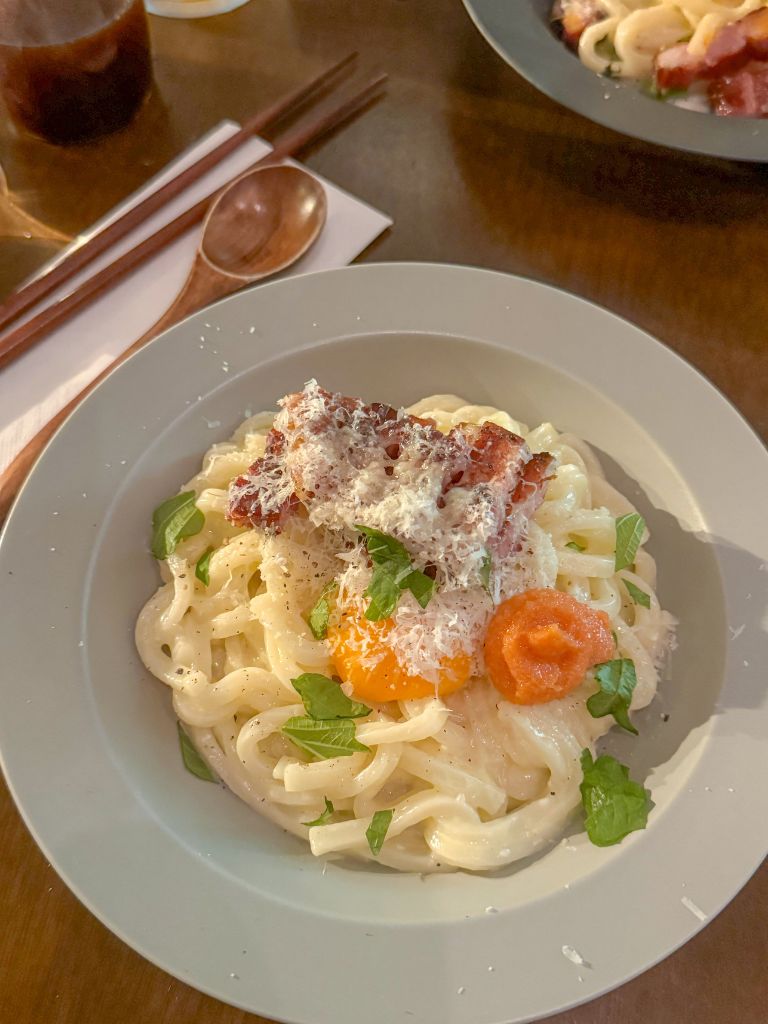
Why visit? If you haven’t heard, the aesthetic Japanese-inspired Paaru has revamped its menu. The popular shokupan toast cafe now specialises in its donabe dinner (S$172 for two pax) which features five courses including a main dish that uses a special Japanese claypot. In the afternoon, the cafe serves light meals, coffee and tea instead.
The quiet space is located in the remote area of Pearl’s Hill Terrace. With its wabi sabi style interior and dark wood furnishing, Paaru has a very cosy and tranquil energy. However, the place can feel quite cramped, and unless you’re lucky, you’ll find that you’ll first have to conquer the long queue before getting to dine here.
Crowd favourites: While we haven’t tried the donabe dinner and can’t speak for it, we did try the sinfully creamy udon carbonara (S$16, add-on S$4 for a drink). The carbona dish contains the usual elements of egg yolk and a generous heap of parmesan cheese, but is also accompanied by mentaiko and shiso leaves.
It sounds almost painfully rich and heavy, but we were surprised to find ourselves finishing it with ease. The shiso leaves definitely helped to cut through the richness of the base with its mild astringency.
If you’re lucky and it’s still in stock, order the financier (S$4), too, one of the sweets that Paaru is known and loved for even before its rebrand.
For the latest on the food scene, check out our round-up of the most interesting coriander items you can find in Singapore or visit some of our most favourite cafes for a relaxing cuppa.
All eateries, except for Bari Uma, Sushi Airways, Katachi Sushi Bar and Paaru, are on the GrabFood delivery service and offer free delivery (up to S$3 off) with GrabUnlimited.
Do explore the GrabFood Dine Out service for awesome deals.
Alternatively, book a ride to get to these Japanese foods in Singapore.
